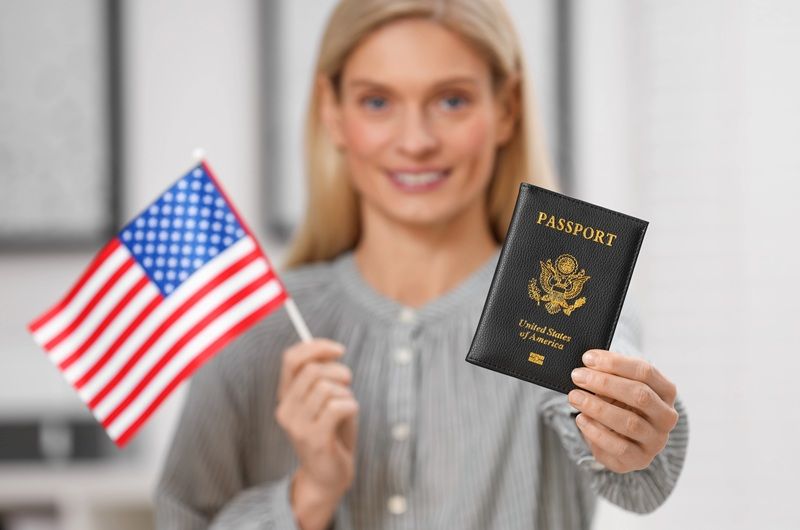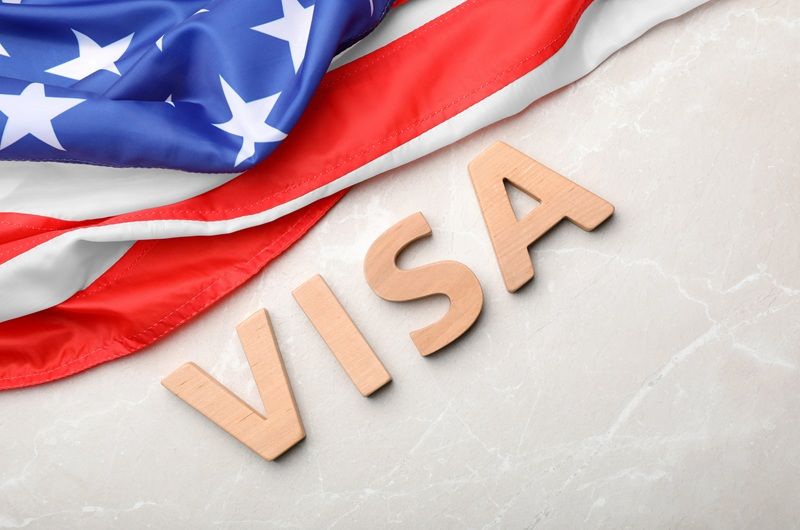Where To File I-130 & I-485 Together – Your Ultimate Guide
Dealing with the intricacies of immigration paperwork can be daunting, especially with multiple forms and application procedures. However, understanding these critical documents can streamline the process and increase your chances of a successful immigration journey.
In this guide, walk through the essential information you need to know. This way, you will ensure that you submit your I-130 and I-485 forms in the right place to confidently move forward with your plans of moving to the United States. Read on to learn more about the differences between these two forms. Know where, when, and how to file them and the advantages of filing concurrently.

What Are Forms I-130 & I-485?
Form I-130, Petition for Alien Relative, and Form I-485, Application for Adjustment of Status, are two primary forms of the immigration process. However, they serve different purposes. Understanding the distinction between the two is essential for a seamless application.
Petition For Alien Relative
You will use Form I-130 to sponsor certain family members to come and live in the United States. You can do this if you are a U.S. citizen or a lawful permanent resident. Knowing when and how to file this form is crucial to initiating the application process successfully.
Form I-130 should typically be filed as the initial step in sponsoring a family member for immigration. It establishes the qualifying familial relationship, serving as the foundation upon which subsequent forms and documents are built.
When submitting Form I-130, you must send it to the appropriate USCIS address. It can vary based on where you live and the beneficiary’s residence. Check the USCIS website for up-to-date information on filing addresses.
The form requires detailed information about both the petitioner and the beneficiary. You must provide personal information, such as names, addresses, and contact details. It may also be necessary to include evidence of your relationship, including marriage certificates, birth certificates, or other relevant documents.
Application For Adjustment Of Status
When individuals aspire to obtain a Green Card, they have two options: to pursue this goal from their home country or within the United States. This choice carries significant implications for the immigration process.
If you are already present in the United States, you can use a specific application route through Form I-485. It is also called the Application to Register Permanent Residence or Adjust Status. This form serves as a pivotal tool to transition from your current immigration status to that of a lawful permanent resident.
Form I-130 is primarily concerned with establishing the familial relationship and obtaining approval for the immigration of the foreign relative. On the other hand, Form I-485 focuses on the adjustment of status for individuals already present in the United States.
Both forms play critical roles in helping families reunite and obtain lawful permanent residency in the United States. Therefore, it is vital to understand the correct filing locations for these forms when submitting them together.
Where To File I-130 & I-485 Together?
When navigating the complexities of U.S. immigration, knowing the correct filing locations for these critical forms is paramount. The concurrent filing allows you to combine the submission of both forms, streamlining the process and saving you valuable time.
By filing together, you don’t have to wait for the approval of form I-130 before filing the form I-485. To determine the correct location for concurrent filing, you need to consider a few factors:
Your Place Of Residence
The primary factor in determining where to file your forms is your place of residence in the United States. USCIS (U.S. Citizenship and Immigration Services) has designated a specific location depending on the state you reside in.
The Category Of Your Eligibility
The category under which you are applying for adjustment of status can also affect the filing location. USCIS has different service centers that handle specific types, such as family-based, employment-based, or humanitarian-based applications. Make sure to check the USCIS website or consult with an immigration attorney. It will help you determine the appropriate service center for your category.
How To File The Forms Concurrently?
Applying for a Family Green Card concurrently streamlines the immigration process by submitting Form I-130 and Form I-485 simultaneously. These forms, any required supporting documents, and filing fees together create your comprehensive green card application or petition. This approach aims to expedite the family reunification process.
However, the processing timeline can vary, generally within seven to 15 months. Factors influencing the processing time include the applicant’s relationship to the petitioner. The USCIS workload and the completeness and accuracy of the submitted materials also affect the waiting time.
Careful preparation and adherence to guidelines are essential for a successful concurrent application. Learn this step-by-step guide to assist you in achieving a streamlined process.
Complete All Forms
Be diligent in confirming that you meet the eligibility criteria for both forms. Additionally, in many instances, you can include Form I-131 for Travel Authorization, allowing you to travel outside the United States while your application is pending. You can also file Form I-765 for Employment Authorization, which permits you to work legally in the country during the process.
These supplementary forms provide valuable benefits during your adjustment of status application. It enhances your ability to travel and work while waiting for a decision on your immigration case.
Gather Necessary Documents

Collect all essential supporting documents, such as proof of the petitioner’s U.S. citizenship or lawful permanent resident status. When filing the forms, you must also provide evidence of the qualifying family relationship. Documentation of the prospective immigrant’s legal admission and presence in the country should also be included.
Mail Your Application & Wait For Receipt Notice
Send your completed forms, supporting documents, and the appropriate fees to USCIS. It is important to use a mailing method that provides delivery confirmation to ensure your package reaches its destination.
Once USCIS receives your application, they will send you receipt notices as confirmation. Keep these notices for your records and as proof of your application submission.
Attend Biometrics Appointment & Interview
The intending immigrant will have a biometrics appointment to capture fingerprints, photographs, and signatures. The next step would be the interview. Here, they will be asked questions relating to the application.
It is crucial to grasp the benefits of filing the forms together. Understanding these benefits can help you make informed decisions and navigate the immigration process more effectively.
What Are The Benefits Of Filing Them Together?
The concurrent filing offers several benefits that can greatly enhance your immigration process. Here are some of the advantages.
Speed & Efficiency
Filing both forms together offers significant advantages in streamlining the immigration process. You can avoid the waiting period for Form I-130 approval before filing Form I-485. This approach can expedite the overall processing time, allowing you to obtain a decision on your case more quickly.
By filing together, USCIS can efficiently assess the relationship between the petitioner and the intending immigrant. They can determine if the relationship meets the eligibility criteria for adjustment of status.
This evaluation includes verifying the authenticity and validity of the relationship presented in the forms and supporting documents. The concurrent filing allows USCIS to review all relevant information and evidence simultaneously. They facilitate a comprehensive assessment of the case.
Employment & Travel Authorization
Once you have filed Form I-485, you can apply for employment authorization (EAD) and advance parole (AP). The EAD allows you to legally work in the country while your adjustment of status application is ongoing. The AP document grants you permission to travel internationally and re-enter the United States without jeopardizing your application.
Continuing Presence In The United States
If you file a concurrent application while in the United States, you can typically stay, even if your nonimmigrant Visa expires. This avoids the need to leave the country and allows you to stay with your family, pursue employment opportunities, and maintain stability in your daily life.
It is important to note that concurrent filing offers numerous benefits. With this, asking for guidance from a lawyer such as Lincoln-Goldfinch Law – Abogados de Inmigración is crucial. They will provide professional advice and guidance throughout the concurrent filing process.
Form I-130 is the Petition for Alien Relatives. It establishes the relationship between a U.S. citizen or permanent resident and a foreign national relative. On the other hand, Form I-485 is the Application for Adjustment of Status. Individuals already in the United States use it to become permanent residents.
Filing these forms together saves time and permits you to work and travel while awaiting a decision. Furthermore, if you are already in the United States, you can remain in the country throughout the process, even if your Visa expires. However, it’s crucial to remember that each case is distinct, underscoring the importance of consulting an immigration attorney for tailored guidance and advice.
Contact A U.S. Immigration Attorney Today!
Categories
How To Find Us
What Our Clients Say
“This Lawfirm is great, very professional and helpful. I love that they are always in communication and always available for when you have questions . 100% recommended by me and my family. Thank you Lincoln-Goldfinch Law – Abogados de Inmigración”





